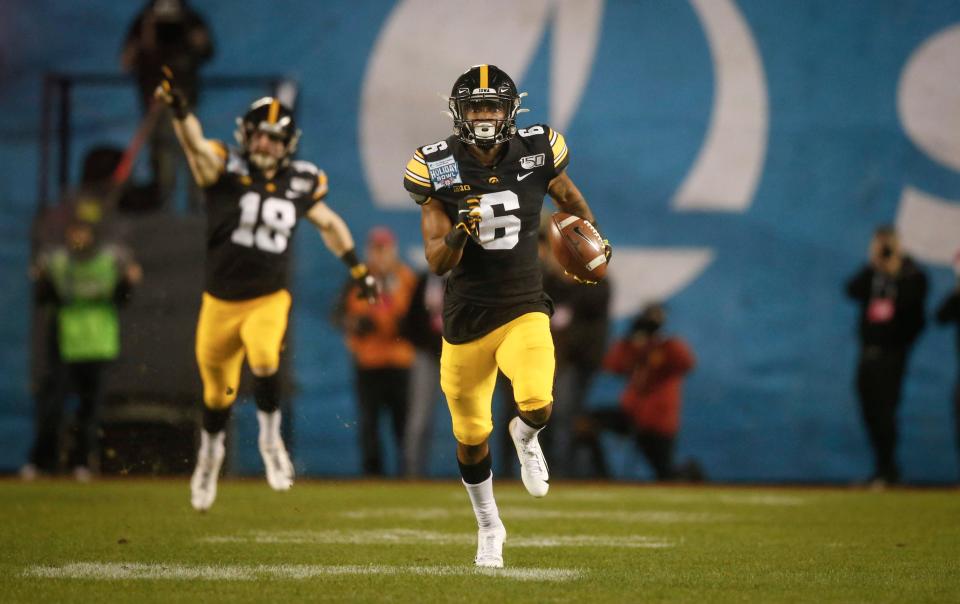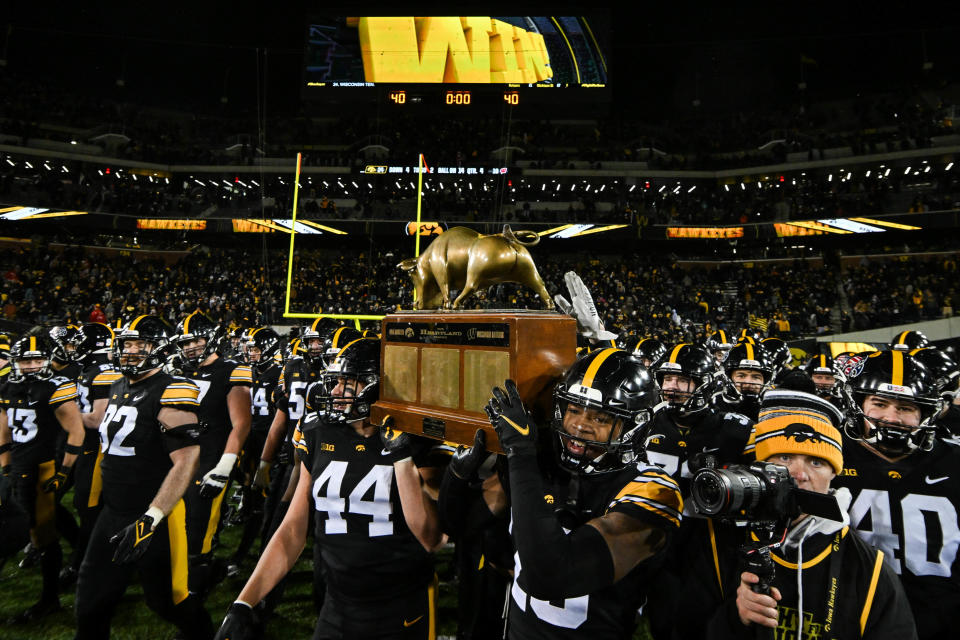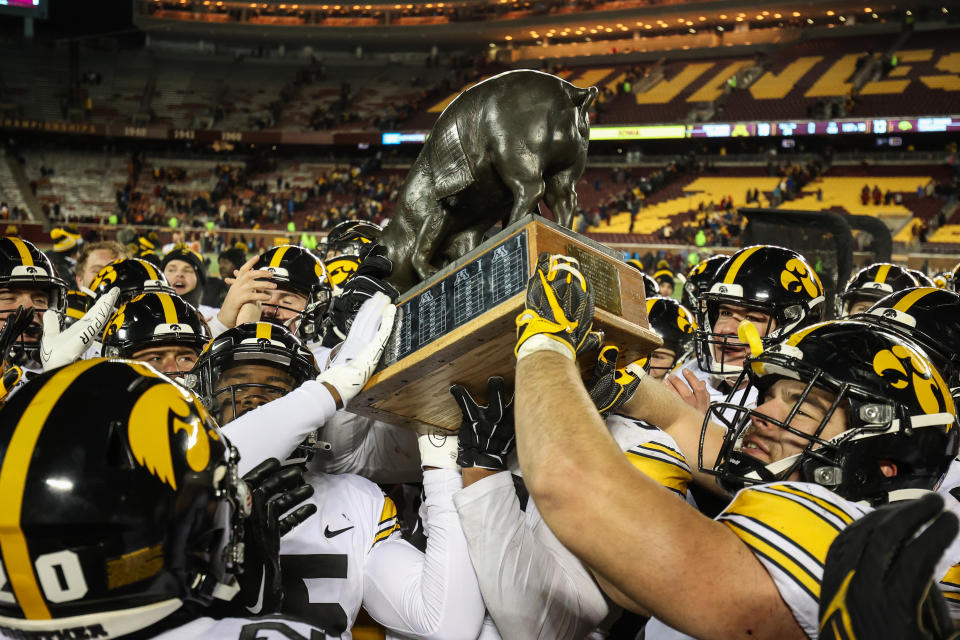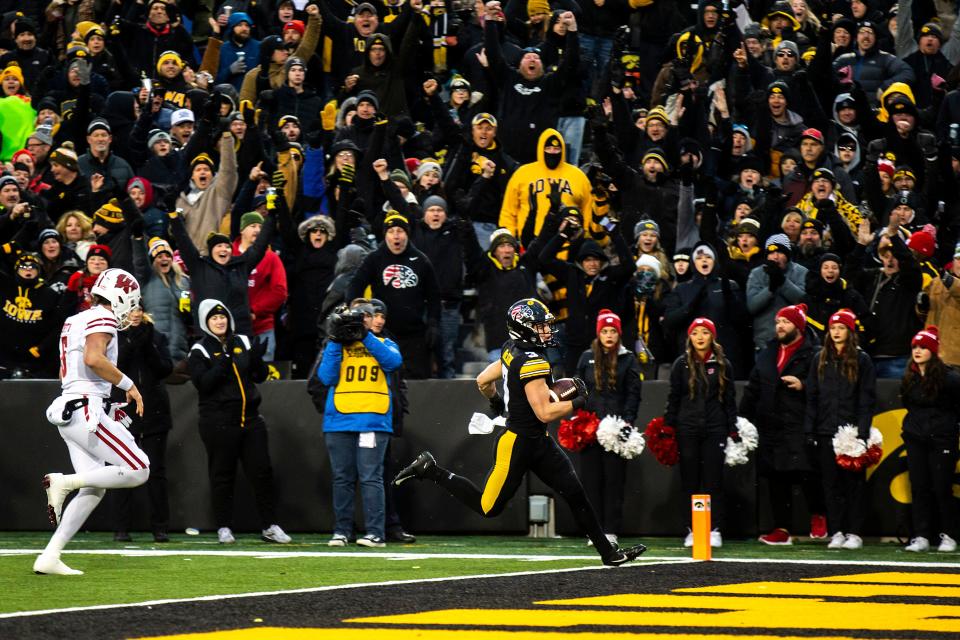What should happen with the Iowa Hawkeyes’ schedule in 2024 and beyond?

The longer things went without the Pac-12 securing a media rights deal, the more it felt like the league could indeed be in peril.
Sure enough, the Colorado Buffaloes roamed off to the Big 12. That move combined with what was seen as an underwhelming offer from Apple TV led to more chaos.
The Big Ten got additive once more, bringing in the west coast’s other two premier programs in Oregon and Washington to go along with USC and UCLA who the league added last summer.
It’s new. It’s exciting. And it once again brings even more big-time college football matchups to the Iowa Hawkeyes and the Big Ten.
But, it also means a reshuffling of the deck. The league had just sorted out its “Flex Protect Plus” scheduling model. And, all things considered, it looked like a pretty nice setup for the Hawkeyes. Iowa kept its three rivals in Minnesota, Wisconsin and Nebraska as permanent opponents while rotating through all of the other league foes on a bi-annual basis.
So, what now? Well, let’s take a look at what the Big Ten could do, what it should do and what it all might mean for the Hawkeyes.
An offer for Hawkeyes fans
For the best local Iowa news, sports, entertainment and culture coverage, subscribe to The Des Moines Register.
The 5-4-4-4 scheduling model

What is the 5-4-4-4 scheduling model? It’s pretty simple. The first number is the amount of permanent opponents each Big Ten team would have. Then, the three fours represent the number of each Big Ten team’s rotating league opponents in a given season over the course of a three-year period.
Five permanent opponents with four rotating opponents every season. It adds up to a nine-game Big Ten schedule and every team would play all 17 other league members every three seasons.
Who should Iowa's permanent 5 opponents be?

Under the 5-4-4-4 scheduling model, it seems like a foregone conclusion that Iowa’s three big rivals would be in the Hawkeyes’ permanent five opponents. It could pretty easily be the current Big Ten West minus Purdue, who is the easternmost school of the bunch.
That would map out like this for the Hawkeyes:
Permanent opponents: Illinois, Minnesota, Nebraska, Northwestern and Wisconsin
Could another 5 permanent opponents be better?

Given that it’s a 5-4-4-4 model, someone has to play the west coast schools besides the west coast schools themselves.
Under this scheduling model, Oregon, Washington, USC and UCLA would each be looking for two more permanent opponents. Just based on geography in the current Big Ten configuration, Minnesota, Nebraska and Iowa are the league’s westernmost schools.
Regular trips to the west coast will no doubt have some Hawkeye fans and old-time Big Ten fans pulling their hair out in frustration. But, hang on just a second.
There’s a scenario here where it could be beneficial to Iowa. Would regular dates in Los Angeles enhance the Hawkeyes’ recruiting profile? What about in the Pacific Northwest?
Iowa hasn’t historically been the flashiest on the recruiting trail, but the game has changed. The Hawkeyes have an annual Big Ten payout that’s only ballooning. The program can’t look at itself in the same way that it has in the past.
Iowa is officially a have-program, not a have-not program. In conjunction with a larger travel budget and an NIL collective that’s already been successful, going out and winning games on a regular basis out west could open up previously untapped recruiting avenues for the Hawkeyes.
Here’s the beauty of it all. You could add these matchups as permanent opponents and still not lose Iowa’s key rivals. Look at this admittedly a little wacky permanent five.
Permanent opponents: Minnesota, Nebraska, Oregon, USC, Wisconsin
The 3-7-7 scheduling model

Maybe you’re like me and aren’t crazy about the idea of having to cycle through three seasons in order to play everybody in the Big Ten. Well, here’s the 3-7-7 model.
It really simplifies things. Every team has three permanent opponents and then would rotate through the other 14 league opponents every other season with seven rotating foes each year.
Of course, it brings the number of conference games for each Big Ten team to 10 per season. On paper, it makes things easier and fans get more of what they want and less of what they don’t care to watch.
Then again, good luck convincing coaches to cut out one cupcake opponent in favor of another Big Ten foe.
Why I like this model

It just makes so much sense for Iowa. It’s easy under this format. The Hawkeyes’ three permanent opponents are its rivals: Minnesota, Nebraska and Wisconsin. Then, just rotate through the other 14 league foes in seven-team increments each season.
It leaves room for Iowa State as an annual nonconference rivalry date and one tuneup game outside of that. Kinnick Stadium gets more high-profile dates and less Utah States and Western Michigans.
Plus, in order to feel like a conference, teams need to see each other on a regular basis. The ability to play each Big Ten team every other season and to host each school at least once every four years is a big-time positive for everybody in the 3-7-7 model.
[lawrence-auto-related count=3]
Contact/Follow us @HawkeyesWire on Twitter, and like our page on Facebook to follow ongoing coverage of Iowa news, notes, and opinions.
Follow Josh on Twitter: @JoshOnREF

